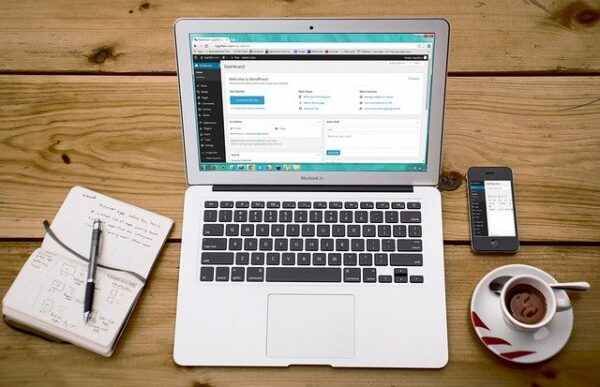‘User-friendly’ has become a trendy term. We see user-friendly equipment, appliances, smartphones and more and more often – websites. As a lot of research is done on the topic of user experience, it’s a great idea to explore the topic and put the knowledge into practice. The benefits of making your website user-friendly are numerous, and they include, for example, increased traffic and profit, greater popularity and high position in search engine results. It’s no secret that search engines like Google do take user-friendliness into account when positioning the website. In other words, the more user-friendly your site is, the bigger are the chances to get to the first page of Google! There’s no time to hesitate then. Below we present seven different techniques that will help you optimize your web page and create a user-friendly site.
- Making It Mobile-friendly
As smartphones are a crucial part of our everyday reality, it’s evident that people use them for browsing the Internet. Web designers and owners need to meet the mobile requirements and make their sites easy to display on a small screen. What does it mean? The page needs to be simplified so that it can be comfortably displayed vertically. For example, the menu should be available just in one click. The photos and videos have to be compressed so that they don’t lose shape or get pixelated. Also, fonts should be bigger than on a computer screen.
- Shortening Loading Time
Waiting for a web page to load is one of the most frustrating things that can happen during a busy day, especially if the internet connection isn’t perfect. In order to meet your users’ needs, it’s best to keep the items on the site as simple as possible. Try to compress pictures and videos and avoid background photos. Think about the plugin use – they’re useful, but they make your page work slower. Cutting out any extra spaces or mistakes in CSS is another helpful tip (you can do it by using special online tools). A set of tips on how to improve the speed is available in the site speed guide by Web Monkey.
- Paying Attention to Order and Payment Options
A large number of site owners sell products and services. That’s why it’s crucial to simplify the processes connected with browsing through the items, as well as basket and payment options. Why? The potential buyer will simply quit if the purchase takes a lot of time and effort. First, you need to remember about the way the products display. Some pages allow the user to choose the layout (for example, 2, 4 or 10 products displayed on a single page). What’s more, once a shopper adds anything to the basket, it should be automatically saved for later, since some Internet users quit the page and open other ones to compare the prices. After they come back, it’s nice to see the chosen products. Also, in terms of payment and user data options, it’s good to keep it simple. The option ‘buy without registration’ is an extremely user-friendly one, as they don’t have to create an account to finish their shopping.
- Expanding Helpdesk Procedures
Helpdesk is crucial to every site. It should work smoothly and as quickly as possible. A user-friendly site should have a few different contact options – via email, phone or direct message. Choosing a chatbot as an alternative to traditional forms of communication is also useful, as it creates an impression of immediate interest and response. Remember, though, that the bot should be responsive and possibly human-like. When it comes to email or phone, simplify the procedures so that it’s easy to contact a consultant, not only access ready recorded instructions.
- Switching to Flat Design
Flat website design means getting rid of any unnecessary element, gradients, textures and colour shades that were a popular element only a few years ago. The latest trends, though, advise the web owners to stick to solid colours and simplicity. It’s good to be careful with this kind of layout, though, as sometimes users may have problems with finding the right buttons and functions.
- Simplifying Navigation
Navigation is the core of every website, as it allows users to take any actions they want. The perfect website menu shouldn’t have hundreds of items, tabs and options, because no one is going to find anything without getting frustrated. It’s best to include only the essential options, like ‘About’, ‘Archive’, ‘Blog’ or ‘Contact’.
- Asking for Feedback
The final, but perhaps the most important stage of making your webpage user-friendly, is asking your users for feedback. They are the people who can provide first-hand experience and response. You can ask for it by an online questionnaire or a simple survey, either put on your page or sent via the newsletter. Bear in mind, however, that a small reward will increase the engagement. ? You can offer a discount or an extra service in return.
Making a website user-friendly does require some effort, but in fact, it’s a must in a modern world, where most technologies went compact. If you’re still confused within the topic, it’s best to visit a couple of pages yourself and note down your impressions. You’ll quickly see what makes you engaged and pleased a user and then apply similar techniques to your own website.

